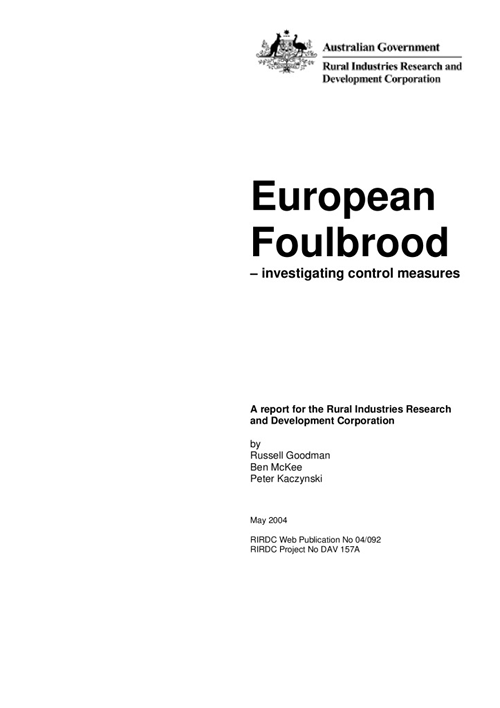THIS PUBLICATION IS AVAILABLE FOR FREE DOWNLOAD ONLY
In 2002, RIRDC produced a five year research and development plan for the Honeybee Program. This plan was formulated in consultation with industry to provide the research direction necessary for the current best practice and preparation for future development in the honey industry. The use of the antibiotic oxytetracycline hydrochloride for the control of the honey bee brood disease, European foulbrood, occurs in all Australian states except Western Australia. The potential for oxytetracycline residues to occur in honey poses a serious threat to the future marketability of domestic and export honey. This publication considers the application of oxytetracycline hydrochloride to honey bee colonies, the degradation of the antibiotic in honey after extraction from hives, plus the efficacy of lower doses to control European foulbrood and reduce the occurrence of residues in honey. Studies on Melissococcus pluton, the causal organism of European foulbrood and the development of a modified hemi-nested polymerase chain reaction (PCR) to detect M. pluton in bees and honey bee products are also presented.





